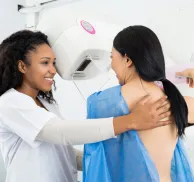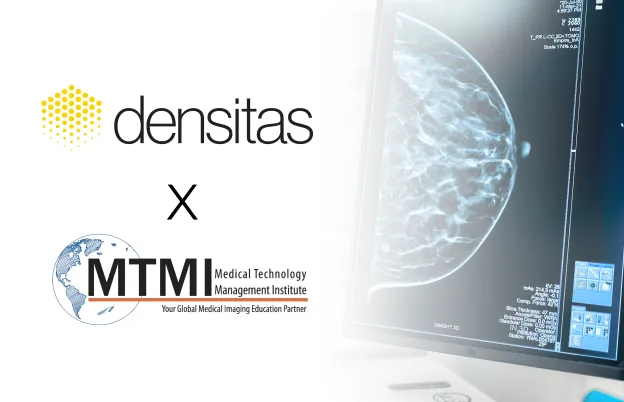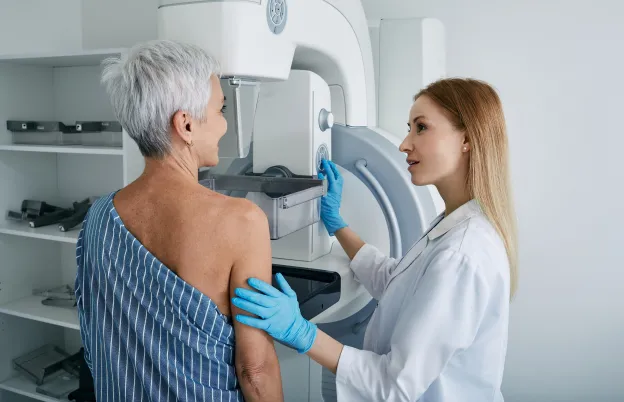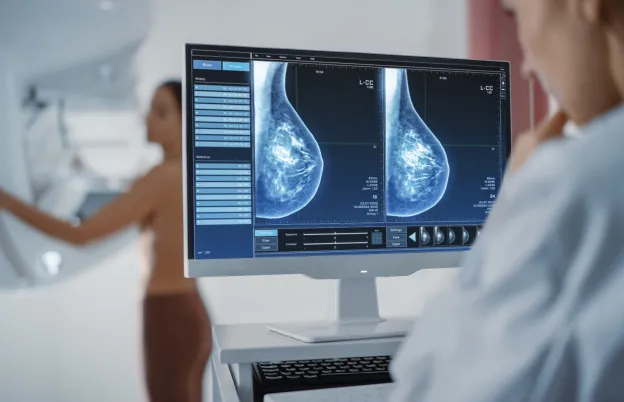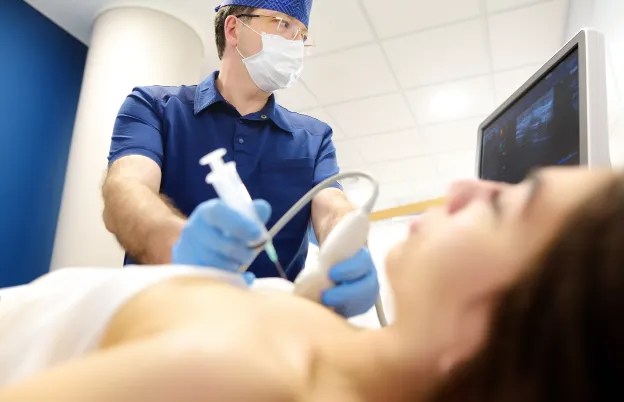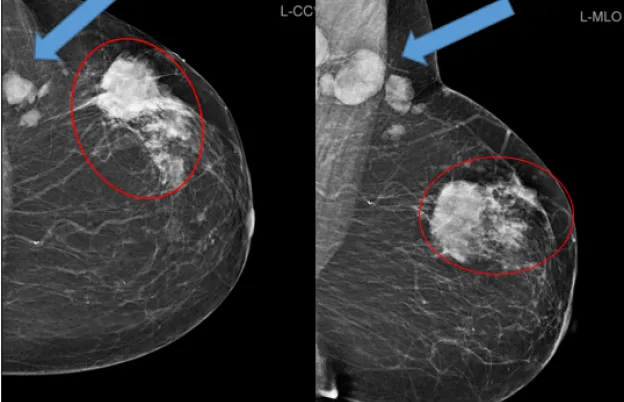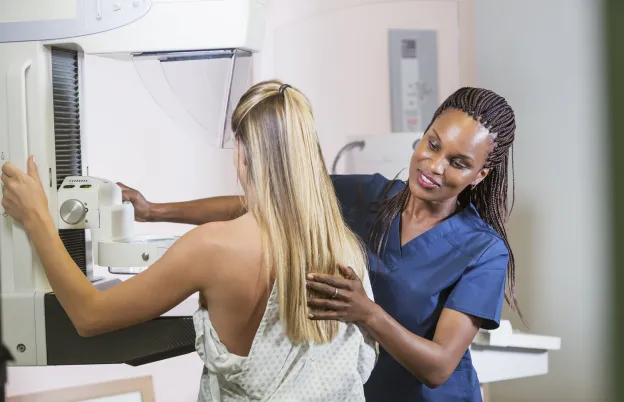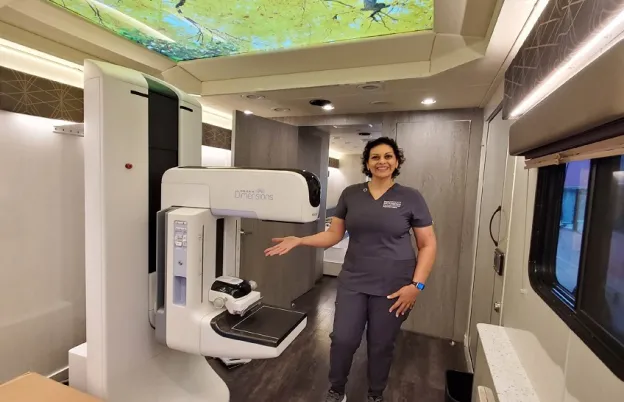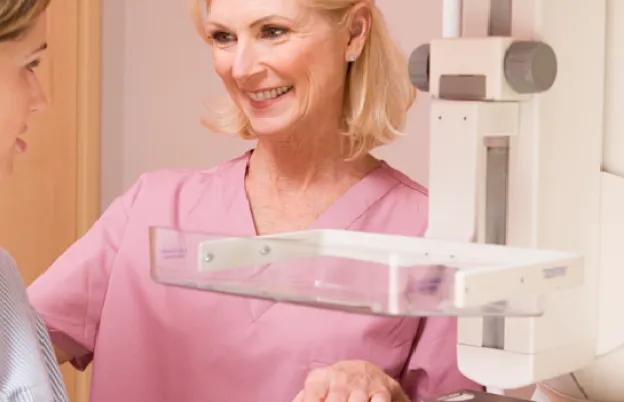There is a nationwide shortage of mammography technologists. This shortage opens up numerous job opportunities and allows you the flexibility to choose an ideal job location. A career in mammography offers stability with daytime schedules, non-weekend hours and high wages. Beyond the professional advantages, it provides a meaningful way to positively impact women's health through early detection of breast cancer. If this career interests you, keep reading to learn more about this career option and make an informed decision about whether this is the right path for you!
What Is a Mammographer?
A mammography technologist is a professional who has taken the steps to become a fully licensed x-ray technologist. This is a specialty area that requires mammography training to perform mammograms, which are x-ray images of a person’s breasts for medical screening and diagnostics. For example, mammograms can be used to see if breast cancer is present to find and treat it as early as possible.
Training as a mammographer teaches you how to perform mammography with a mammography machine. Specific training in this discipline follows mandates by the Mammography Quality Standards Act (MQSA). Working in this role also includes patient support, such as offering compassion regarding the possible implications of a mammogram and educating patients about how important these mammograms are for health and wellness.
Do You Need a Degree to Be a Mammogram Tech?
The minimum degree requirement for a mammographer is an associate degree. You’ll start with at least two years of x-ray school training to qualify as a fully licensed radiologic technologist, the general term for a professional who carries out diagnostic imaging. While it’s not a necessity, many mammographers have a four-year degree in medical areas like anatomy, pathophysiology, chemistry, radiation protection, physics, or pharmacology. You also carry out specific mammography training.
In addition to schooling, this professional is encouraged to take, and pass, the national board certification examination. If from the state of California, one must, under CA state law, take and pass, a California State Mammography exam before taking the national board exam. You will need to keep up with continuing education requirements to maintain your certification and to keep up with the latest technology.
Steps to Become a Mammography Technologist: (MQSA & ARRT®)
Becoming a mammographer includes a combination of didactic learning, hands-on training, and mammography certification. Didactic learning refers to instruction from qualified instructors during your initial training. You also perform hands-on training supervised by a qualified professional in the field.
Here are the specific steps to take toward working as a mammo tech, according to MQSA requirements.
- Start by achieving licensing as an x-ray technology professional by receiving a general/full state license to perform radiography or receiving a general radiography certification by an FDA-approved certification body. These bodies can include the American Registry of Radiologic Technologists (ARRT®) or the American Registry of Clinical Radiography Technologists (ARCRT) if the technologist is listed with the ARRT® mammography registry.
- Complete 40 hours of initial mammography training that includes breast anatomy and physiology, breast positioning and compression, breast implant imaging, and quality assurance/control.
- Carry out 25 supervised mammograms under an MQSA-qualified mammography technologist.
- Receive relevant mammographic modality training, as needed. This means eight hours of training in a specific modality you were not previously trained in, such as digital or breast tomosynthesis, before you can independently perform this modality.
Carrying out the previous steps qualifies you to perform mammography on your own according to MQSA requirements. You should also receive mammography certification through your training program, which you can show to MQSA as needed.
California Requirements
California residents have different requirements on how to become a mammographer. If you want to become a mammographer in this state, here are the steps you’ll need to take, in this order, once you have already become a fully licensed x-ray technologist:
- Complete 40 hours of an initial mammography training program
- Pass the California state mammography exam
- Carry out 25 supervised mammograms under a MQSA qualified mammography technologist
ARRT® Requirements
Many employers also require ARRT® mammography certification beyond meeting MQSA requirements. To receive this certification, follow these steps:
- Complete the ARRT® application process
- Carry out 75 mammograms on your own to prepare for the ARRT® exam, which comes after the 25 supervised mammograms for the MQSA guidelines.
- Complete ]ARRT®Mammography Clinical Experience Requirements before taking the ARRT® mammography examination. Examples include patient education, mammographic procedures, radiographic interpretation, and quality control and documentation.
- Complete tasks within the ARRT® Postprimary Eligibility Pathway Handbook within 24 months before applying to sit for the ARRT® mammography exam. Once you have applied for the exam, you will have a 365-day window to take the exam. Once the window closes, you will need to start the application process over again.
- Complete the application process online through the ARRT® website after your education program is approved by ARRT® and you have a supervisor who has signed off on your clinical experience requirements.
- Take the ARRT® examination through Pearson Vue Testing Centers.
How to Continue as a Qualified Mammographer
Once you have become a qualified mammography technologist, you then need to follow steps to maintain your qualifications. Here are two paths depending on whether you stay in the field or allow your certification to lapse for a time:
Steps to Remain a Legal Mammography Technologist
To continue working in this field, you need to continue with education and experience, namely:
- Continuing Education: Obtain 15 continuing education (CE) credits in mammography every three years
- Continuing Experience: Perform a minimum of 200 mammograms every two years.
Steps to Re-qualify as a Mammography Technologist
If you have left the mammography field for more than two years, you need to re-qualify to perform mammograms once again. These are the steps to re-qualify:
- Reach a total of 15 mammography continuing education credits
- Perform 25 mammograms under the supervision of an MQSA-qualified mammography technologist
- Perform another 175 mammograms in the initial six months after you re-qualify
Start Your Initial Mammography Training
Knowing the various steps in the process to becoming a mammo tech can help you determine whether this is a path you want to take. Working in this profession requires didactic learning and hands-on training as well as certification. Then, you need to continue gaining experience and continuing education credits to continue practicing in this field. A training program can guide your initial journey to becoming this type of radiological technologist. Then, once you are in the field, you can support patients in their preventive healthcare and diagnostics.
Start your journey toward becoming a mammography technologist by enrolling in an MTMI mammography training course. MTMI programs are taught by experts with national reputations in their fields and cover every modality. Our cross-training courses, offered in-class, through live webinars, and as online self-paced options, are designed to prepare you for registry exams and advance your career to the next level. Check out our full catalog of programs or contact us with questions today!
